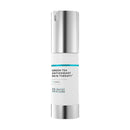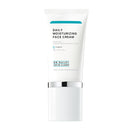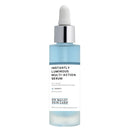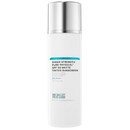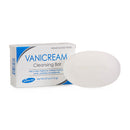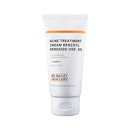The Power of Soaking & Sprouting Grains & Seeds (Recipe Included!)

No matter who you are or where your ancestors came from, I bet someone in your family lineage once soaked and sprouted their grains and seeds before cooking. It was not only a common practice, but it was also common wisdom. I don’t know when this simple kitchen act fell out of favor in American culture, but it did, and it’s time to bring it back fully to showcase the power of soaking and sprouting grains and seeds.
I want to get you jazzed to try soaking for yourself. Here’s why grain and seed soaking is such a health bonanza for you and your family.
What are the health benefits of soaking and sprouting?
Every seed has its own measure of protection, so that it germinates and becomes a plant when the perfect set of conditions (moisture, soil, oxygen, light, season, etc.) are just right. One of these seed protectors is called phytic acid, also known as a cluster of acids called phytates.
Why do you want to remove phytates from grains and seeds?
Phytic acid can be soaked off, and it’s important to do so because phytic acid is an anti-nutrient, which very simply means it prevents the metabolism of other nutrients. While soaking for the sake of leaching the phytates is reason enough to do it, there is a second very important reason to take this seriously, and it is soaking for the purpose of sprouting, or germinating the seed/grain.
Soaking seeds and grains helps them spout and this makes them even healthier for you.
All grains, cereals, beans and seeds can be sprouted with just a few exceptions including flax, rolled oats or any seeds that are sold as spices. To understand this better, let’s revisit the seed.
If you were to look closely or have a recollection of an enlarged drawing of a seed, you might remember the largest part is the carbohydrate-packed endosperm. As the seed encounters the perfect conditions for sprouting, this sugary carbohydrate becomes the fuel for the seed until it develops a root system to bring nourishment from the soil and leaves, which feeds the plant from the sun (photosynthesis).
As the seed "germ" grows and consumes the carbs, it transforms itself into protein, some fat and some carbs.
Sprouted seeds and grains have lower carbs and higher protein.
When we eat a grain, cereal, bean, legume or seed that has not been soaked or germinated, not only are we consuming the anti-nutrient phytates, but we are also consuming a carbohydrate instead of a protein. No wonder so many people have "trouble with grains!"
How do you pre-soak your grains and seeds to turn them into an easily digested and supercharged health bonanza?
A full 24-hour soak for whole grains is usually enough to bring most seeds and grains to the verge of germination, and it’s long enough to inactivate the anti-nutrients (the enzyme inhibitors and phytates). It also hydrates the grain, so that it doesn’t need to hydrate itself in our belly. The breakdown of those carby starches makes it ready to cook so that our own enzymes can finish the digestion process.
However, there are some exceptions to the 24 hour soaking rule for seeds and grains:
- Some grains benefit from a longer soak including barley, rye and wheat. These are better digested when they soak for 3-4 days, swapping out the water each day.
- Quinoa* and teff need only 12 hours, so you could start that soak in the morning, swap the cook water and enjoy them for a dinner.
- Amaranth, buckwheat, millet, oat groats and rice can be soaked for 24 hours, but 48 hours is ideal, again swapping the water in between the days.
- If it’s a bean or legume, soak until you just notice the sprout. Learn more about how to supercharge the nutrition in your beans and legumes in "Beans: The Protein to Ensure Health & Energy." (Quick hint: add a piece of kombu to your cook water.)
How do you cook pre-soaked grains and seeds?
Some recommend cooking your grains in your soak water, and others recommend pouring it off and starting with fresh water for the cooking. I, personally, like a fresh start. The longer the cooking time, the more digestible the grains become.
When you think back to a "traditional" image of wheat fields, you might easily conjure big wheat bundles sitting in a harvested field. It was a manual process to harvest that wheat, and it could take many days. What do you suppose was happening to all those grains, sitting in the midst of night followed by the heat and light of day? Germinating! With the advent of the combine harvester, which is comparatively very fast, wheat goes from a growing plant to milled flour really quickly. Flour won’t germinate.
Think about it, ALL our modern milled flour is bursting with carbohydrates, phytates and enzyme inhibitors that have made their way into our diet – meaning your tummy and body. If you struggle with grains like wheat, you probably know the sad rest of the story.
Are you starting to understand the benefits of this simple task of soaking? I understand that everyone is busy, but I want to introduce the idea of "Kitchen Farming."
What is Kitchen Farming?
It's not a complex process, but it does require some planning. In Kitchen Farming, you have some grain soaking happening, maybe some alfalfa sprouting for your sandwiches, while you are cultivating some probiotic kefir, and there could even be a jar of probiotic sauerkraut doing its thing. These are all living, growing things, and they are doing their work while we go on about our lives.
While I’m making dinner one night, I’ll put something on to soak for the following dinner. Lentils are a favorite because I could make a soup, salad, or eat them with vegetables. There is so much benefit to your health for the simple effort of soaking food in a bowl of water! Give it a try with the quinoa salad recipe below!
I love this salad because this grain can soak adequately between breakfast and dinner, it cooks relatively quickly, it's a complete protein, it's non-glutinous, and lastly, it is as versatile as whatever is in the fridge or pantry. I can add garbanzo beans, all the vegetables I want, maybe some feta and a delicious dressing for a nutritious and satisfying meal.  Note:
Note:
*Quinoa is naturally coated with saponin, a bitter compound that repels predators.
Saponin is "soapy" and can be removed quite easily. After the soak, I drain the quinoa into a metal mesh strainer, and with a wooden spoon and running water, I can agitate the grains to rub off the saponin. It is then ready to cook.
Many people avoid quinoa because they have experienced it tasting bitter, but these steps will help solve that problem and give you delicious, really nutritious quinoa as a higher protein grain option.
As I always say, I will never tell you what you should eat, only how to cook something to maximize its nutritional benefit.
In addition to this excellent insight about the power of soaking and sprouting grains and seeds, feel free to dig deeper into which foods to include into your daily diet and why by downloading Dr. Bailey's free ebook, “How to Eat Your Way to Beauty and Health,” that consists of information for building a healthy eating foundation. It includes a 14-day recipe model to get you started too! You won’t regret it or the benefits it has on your skin and health!
Reference,
Albert-Matesz, Rachel and Matesz, Don. The Garden of Eating. Arizona: Planetary Press, 2004.

Certified Natural Chef Monica Sallouti’s lifelong passion for delicious nutritious food comes from both her formal training and time spent in the kitchens of her two grandmothers as a young girl. She honed her culinary skills and nutritional education at the Holistic Nutrition and Culinary Arts program at Bauman College in Penngrove, CA. The specialty of nutrition for Chef Sallouti was sparked after a health crisis some 19 years ago. In her late 20’s, she was diagnosed with metastatic melanoma. As part of her “treatment,” she developed a keen awareness of the inextricable link between food, cooking and health. Now, 19+ years later, Sallouti brings her knowledge, culinary creativity and care to both her clients.



